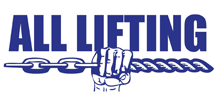
DIFFERENT TYPES OF LIFTING HOOKS
If you are planning your next lifting project, there are many things to think about. Like when choosing your lifting gear, such as the type of sling and any components that goes with it. Hooks are a very crucial element when it comes to lifting loads, and there is a wide selection to choose from. When you use your lifting hooks, be careful and think about how much weight they can hold. If the hook starts bending or breaking it could damage other parts of equipment that rely on this metal piece as well.
It is important to consider the following information, as it will help you choose the correct hook for your project.
- The weight of your load
- The type of load and angle of the lift
- Connection point at the head of the hook
- Connection point at the bottom of the hook
- Shackle connections
- Eye bolts, swivel hoists or lifting point connections

There are numerous types of hooks available in the market. It is important to select the correct hook for the job, as they all have different applications. Some of the different types of hooks include eye, clevis, swivel, foundry and grab hooks, just to name a few
Types of Safety Mechanisms
Safety latches on hooks are designed to add safety and security to lifting applications. Some of the various types of safety mechanisms include:
 |
Safety Latch Hook or Sling Hook – these types of hooks always stay closed and require manual opening of the latch to take the load off. |
 |
Self-locking Hook – these types of hooks have a trigger that needs to be manually operated to open and close the latch mechanism. |
 |
Grip Latch Hook – these types of hooks are probably the most robust and could be the safest one. These types of hooks tend to last longer thanks to the engineering design. |
How does the head of the hook attach to your slings?
Once again there are various connection types, with the best option being dependent the type of lift. A range of options include:
| Eye Type Connection – An eye hook requires a coupler in most cases to be able to connect to a sling or shackle. It allows easy connection to couplers which gives more flexibility to the chain or sling movement. |  |
| Clevis Type Connection – A clevis hook connects directly to the chain and may be more affordable as there are less components required with this type of connection. However, there is less flexibility in the movement where the hook is connected to the chain. |  |
Different Shapes of Hooks
 |
Swivel Hooks On the other hand, swivel hooks are designed with a ball bearing that allows the hook to swivel freely under load. |
 |
Foundry Hooks Foundry hooks are usually designed without a latch. These types of hooks are usually used in applications where there could be a risk if humans connect or remove the load from the hook. |

|
Grab Hooks A grab hook provides flexibility to shorten chain slings and can be used for back-hooking. They have supporting lugs that allow no reduction of the working load limit. |
Our friendly staff at All Lifting will help you to determine what sort of hook you’ll need to purchase to complete your job. Keep in mind that there will be questions such as the load weight, angle, type of sling and sling hitch. Contact us and one of our friendly staff will help you.


